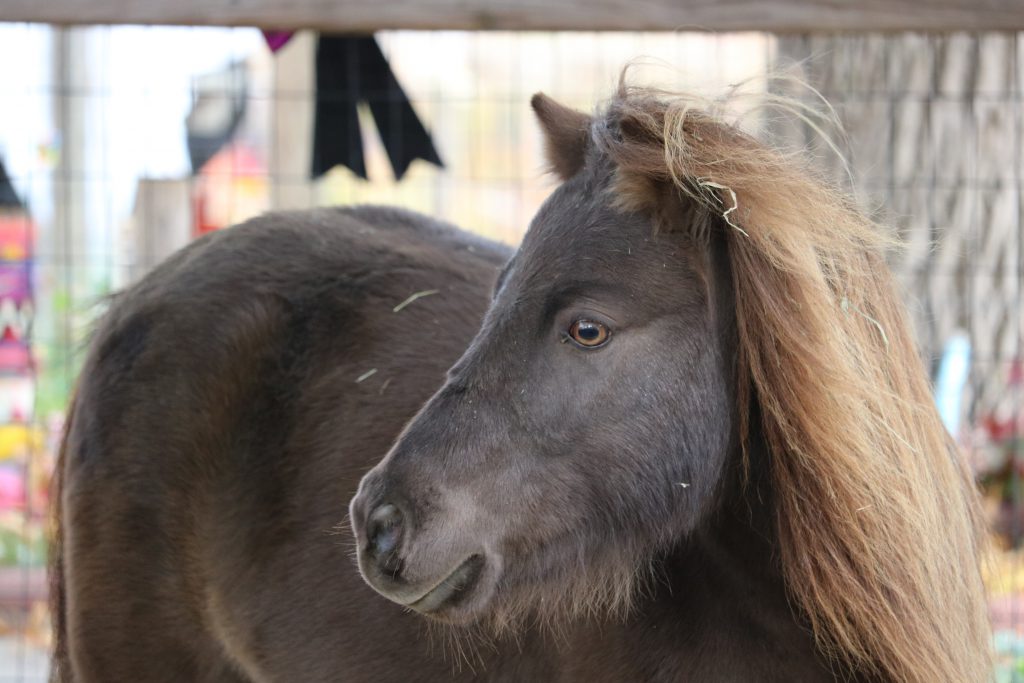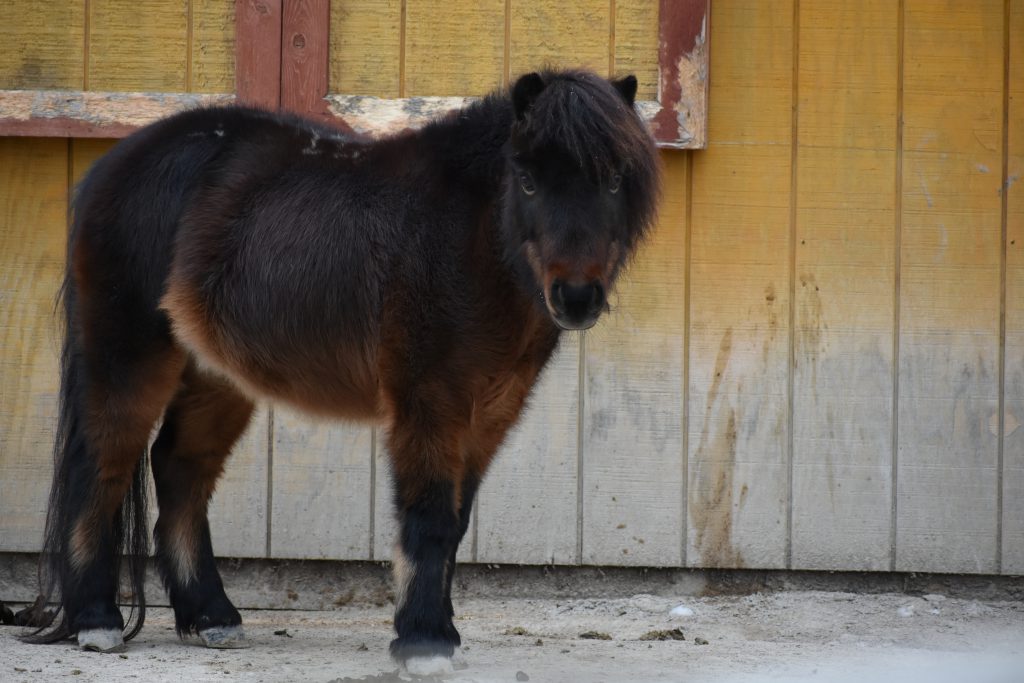Equus caballus
Mammal | Northeastern Africa, Central Asia, Middle East, extending through Mongolia


Animal Info
Horses are social by nature and our two minis are extremely attached – they call to each other if they are ever separated. They descend from the same ancestors as standard horses, the wild horse (Tarpan). Because of their high intelligence, small stature and long life spans (30 years), miniature horses have recently been incorporated in programs for leading the blind.
Horses can turn their ears independently to capture sounds from all angles (and determine if predators are in the area). Their ears are specially shaped like a funnel to direct sounds where they can be interpreted best.
Miniature horses cannot support much weight for a rider, but can pull more than two times their weight!
Diet
In the wild: Wild grasses
At the Zoo: Alfalfa/Timothy hay mix and occasional horse treats
Habitat
Ancient horses were found in short grasslands and desert scrubland
Conservation Status
International Union for Conservation of Nature (IUCN) – Domestic- not listed
There are three species which are in need of protection:
Equus ferus przewalskii (Mongolian Wild Horse)
IUCN: Endangered
Found in Mongolia
Equus africanus (African Wild Ass)
IUCN: Critically Endangered
Found in Djibouti, Eritrea, Ethiopia and Somalia
Equus hemionus (Onager or Kulan)
IUCN: Endangered
Found in Northwest India and Iran
